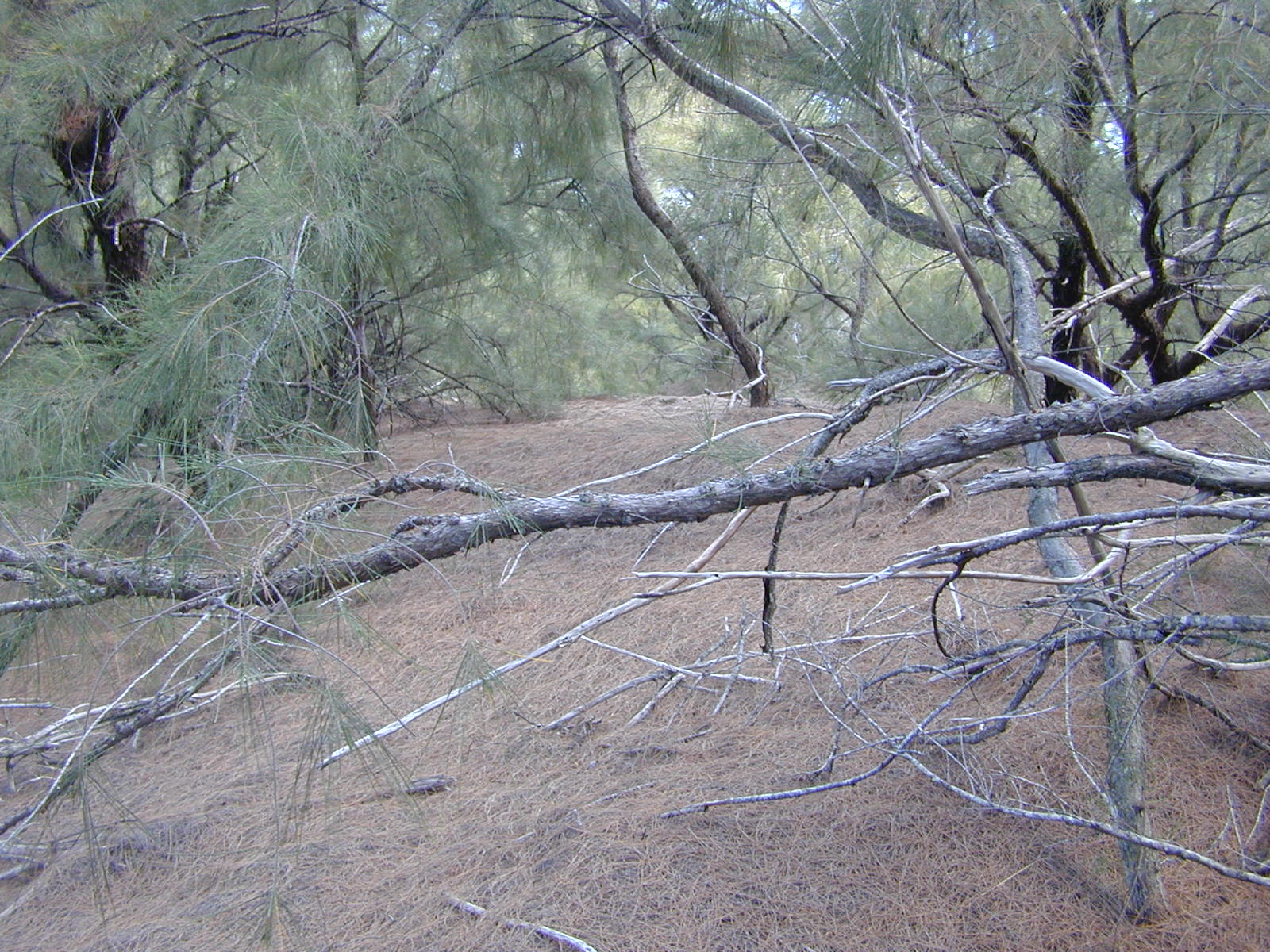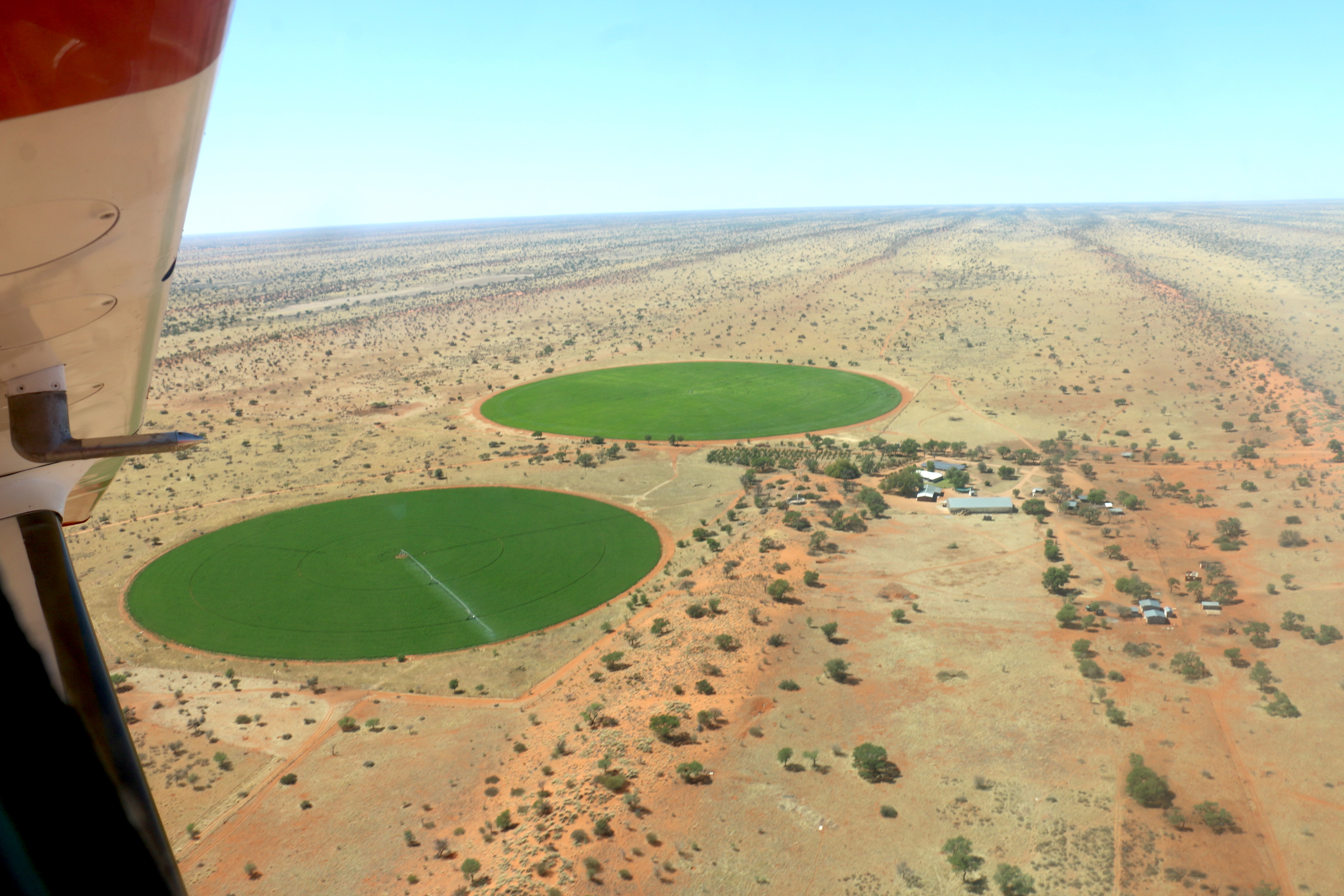|
Allelopathic
Allelopathy is a biological phenomenon by which an organism produces one or more biochemicals that influence the germination, growth, survival, and reproduction of other organisms. These biochemicals are known as allelochemicals and can have beneficial (positive allelopathy) or detrimental (negative allelopathy) effects on the target organisms and the community. Allelopathy is often used narrowly to describe chemically-mediated competition between plants; however, it is sometimes defined more broadly as chemically-mediated competition between any type of organisms. The original concept developed by Hans Molisch in 1937 seemed focused only on interactions between plants, between microorganisms and between microorganisms and plants. Allelochemicals are a subset of secondary metabolites, which are not directly required for metabolism (i.e. growth, development and reproduction) of the allelopathic organism. Allelopathic interactions are an important factor in determining species dist ... [...More Info...] [...Related Items...] OR: [Wikipedia] [Google] [Baidu] |
Juglans Nigra
''Juglans nigra'', the eastern American black walnut, is a species of deciduous tree in the walnut family, Juglandaceae, native to central and eastern North America, growing mostly in riparian zones. Black walnut is susceptible to thousand cankers disease, which provoked a decline of walnut trees in some regions. Black walnut is allelopathic, releasing chemicals from its roots and other tissues that may harm other organisms and give the tree a competitive advantage, but there is no scientific consensus that this is a primary competitive factor. Black walnut is an important tree commercially, as the wood is a deep brown color and easily worked. Walnut seeds (nut (fruit), nuts) are cultivated for their distinctive and desirable taste. Walnut trees are grown for lumber and food, and processors have found additional markets for even the tough outer hulls by finely grinding them for use in products such as abrasive cleansers. Many cultivars have been developed for improved quality w ... [...More Info...] [...Related Items...] OR: [Wikipedia] [Google] [Baidu] |
Ailanthus Altissima
''Ailanthus altissima'' ( ), commonly known as tree of heaven or ailanthus tree, is a deciduous tree in the quassia family. It is native to northeast and central China, and Taiwan. Unlike other members of the genus ''Ailanthus'', it is found in temperate climates rather than the tropics. The tree grows rapidly, and is capable of reaching heights of in 25 years. While the species rarely lives more than 50 years, some specimens exceed 100 years of age. It is considered a noxious weed and vigorous invasive species, and one of the worst invasive plant species in Europe and North America. In 21st-century North America, the invasiveness of the species has been compounded by its role in the life cycle of the also destructive and invasive spotted lanternfly. Description ''Ailanthus altissima'' is a medium-sized tree that reaches heights between with a diameter at breast height of about . The bark (botany), bark is smooth and light grey, often becoming somewhat rougher w ... [...More Info...] [...Related Items...] OR: [Wikipedia] [Google] [Baidu] |
Casuarina Litter
''Casuarina'', also known as she-oak, Australian pine and native pine, is a genus of flowering plants in the family Casuarinaceae, and is native to Australia, the Indian subcontinent, Southeast Asia, Pacific Islands, islands of the western Pacific Ocean, and eastern Africa. Plants in the genus ''Casuarina'' are Monoecy, monoecious or Dioecy, dioecious trees with green, pendulous, photosynthetic branchlets, the leaves reduced to small scales arranged in Whorl (botany), whorls around the branchlets, the male and female flowers arranged in separate spikes, the fruit a cone containing grey or yellowish-brown winged seeds. Description Plants in the genus ''Casuarina'' are dioecious trees (apart from ''C. equisetifolia'' that is monoecious), with fissured or scaly greyish-brown to black bark. They have soft, pendulous, green, Photosynthesis, photosynthetic branchlets, the leaves reduced to scale-like leaves arranged in whorls of 5 to 20 around the branchlets. The branchlets are seg ... [...More Info...] [...Related Items...] OR: [Wikipedia] [Google] [Baidu] |
Natural Environment
The natural environment or natural world encompasses all life, biotic and abiotic component, abiotic things occurring nature, naturally, meaning in this case not artificiality, artificial. The term is most often applied to Earth or some parts of Earth. This environment encompasses the interaction of all living species, climate, weather and natural resources that affect human survival and economic activity. The concept of the ''natural environment'' can be distinguished as components: * Complete ecological units that function as natural systems without massive civilized human intervention, including all vegetation, microorganisms, soil, rock (geology), rocks, plateaus, mountains, the atmosphere of Earth, atmosphere and list of natural phenomena, natural phenomena that occur within their boundaries and their nature. * Universal natural resources and phenomenon, physical phenomena that lack clear-cut boundaries, such as air, water and climate, as well as energy, radiation, electric ... [...More Info...] [...Related Items...] OR: [Wikipedia] [Google] [Baidu] |
Exudate
An exudate is a fluid released by an organism through pores or a wound, a process known as exuding or exudation. ''Exudate'' is derived from ''exude'' 'to ooze' from Latin language, Latin 'to (ooze out) sweat' (' 'out' and ' 'to sweat'). Medicine An exudate is any fluid that filters from the circulatory system into lesions or areas of inflammation. It can be a pus-like or clear fluid. When an injury occurs, leaving skin exposed, it leaks out of the blood vessels and into nearby tissues. The fluid is composed of serum (blood), serum, fibrin, and White blood cell, leukocytes. Exudate may ooze from cuts or from areas of infection or inflammation. Types * Purulent or suppurative exudate consists of plasma with both active and dead neutrophils, fibrinogen, and necrotic parenchymal cells. This kind of exudate is consistent with more severe infections, and is commonly referred to as pus. * Fibrinous exudate is composed mainly of fibrinogen and fibrin. It is characteristic of Rheuma ... [...More Info...] [...Related Items...] OR: [Wikipedia] [Google] [Baidu] |
De Candolle
Augustin Pyramus (or Pyrame) de Candolle (, , ; 4 February 17789 September 1841) was a Swiss people, Swiss botany, botanist. René Louiche Desfontaines launched de Candolle's botanical career by recommending him at a herbarium. Within a couple of years de Candolle had established a new genus, and he went on to document hundreds of plant families and create a new natural plant classification system. Although de Candolle's main focus was botany, he also contributed to related fields such as phytogeography, agronomy, paleontology, medical botany, and economic botany. De Candolle originated the idea of "Nature's war", which influenced Charles Darwin and the principle of natural selection. De Candolle recognized that multiple species may develop similar characteristics that did not appear in a common evolutionary ancestor; a phenomenon now known as convergent evolution. During his work with plants, de Candolle noticed that plant leaf movements follow a near-24-hour cycle in constant ... [...More Info...] [...Related Items...] OR: [Wikipedia] [Google] [Baidu] |
Chang-Hung Chou
Chou Chang-hung (; born 5 September 1942) is a Taiwanese botanist and plant ecologist. He has been elected a fellow of The World Academy of Sciences and an academician of Academia Sinica. Academic career Chou completed a bachelor's degree and master's degree at National Taiwan University in 1965 and 1968, respectively, in the field of botany. During his doctoral study at the University of California, Santa Barbara, he chose to specialize in plant ecology. Upon completing his Ph.D. in 1971, Chou pursued postdoctoral research at the University of Toronto. He then returned to Taiwan as an associate research fellow affiliated with the Academia Sinica's Institute of Plant and Microbial Biology. Chou was successively promoted to full research fellow in 1976, and served as institute director from 1989 to 1996. Between 1999 and 2002, Chou served as vice president of the National Sun Yat-sen University. He left NSYSU and the IPMB in 2002 to become the president of the National Pingtung Uni ... [...More Info...] [...Related Items...] OR: [Wikipedia] [Google] [Baidu] |
Shennong Ben Cao Jing
''Shennong Bencaojing'' (also ''Classic of the Materia Medica'' or ''Shen-nong's Herbal Classics'' and ''Shen-nung Pen-tsao Ching''; ) is a Chinese book on agriculture and medicinal plants, traditionally attributed to Shennong. Researchers believe the text is a compilation of oral traditions, written between the first and second centuries AD.Traditional uses, chemical components and pharmacological activities of the genus Ganoderma P. Karst.: a review / ''Li Wang, Jie-qing Li, Ji Zhang, Zhi-min Li, Hong-gao Liu, Yuan-zhong Wang'' // RSC Advances: Issue 69, 2020. — p. 42087 ''The ... [...More Info...] [...Related Items...] OR: [Wikipedia] [Google] [Baidu] |
Common Era
Common Era (CE) and Before the Common Era (BCE) are year notations for the Gregorian calendar (and its predecessor, the Julian calendar), the world's most widely used calendar era. Common Era and Before the Common Era are alternatives to the original Anno Domini (AD) and Before Christ (BC) notations used for the same calendar era. The two notation systems are numerically equivalent: " CE" and "AD " each describe the current year; "400 BCE" and "400 BC" are the same year. The expression can be traced back to 1615, when it first appears in a book by Johannes Kepler as the (), and to 1635 in English as " Vulgar Era". The term "Common Era" can be found in English as early as 1708, and became more widely used in the mid-19th century by Jewish religious scholars. Since the late 20th century, BCE and CE have become popular in academic and scientific publications on the grounds that BCE and CE are religiously neutral terms. They have been promoted as more sensitive to non-Christia ... [...More Info...] [...Related Items...] OR: [Wikipedia] [Google] [Baidu] |
Alfalfa
Alfalfa () (''Medicago sativa''), also called lucerne, is a perennial plant, perennial flowering plant in the legume family Fabaceae. It is cultivated as an important forage crop in many countries around the world. It is used for grazing, hay, and silage, as well as a green manure and cover crop. The name alfalfa is used in North America. The name lucerne is more commonly used in the United Kingdom, South Africa, Australia, and New Zealand. The plant superficially resembles clover (a cousin in the same family), especially while young, when glossary of leaf morphology#trifoliate, trifoliate leaves comprising round leaflet (botany), leaflets predominate. Later in maturity, leaflets are elongated. It has raceme, clusters of small purple flowers followed by fruits spiralled in two to three turns containing 10–20 seeds. Alfalfa is native to warmer temperate climates. It has been cultivated as livestock fodder since at least the era of the Ancient Greece, ancient Greeks and Ancient R ... [...More Info...] [...Related Items...] OR: [Wikipedia] [Google] [Baidu] |
Pigweed
Pigweed can mean any of a number of weedy plants which may be used as pig fodder: * ''Amaranthus'' species ** ''Amaranthus albus'', white pigweed, tumble pigweed ** '' Amaranthus blitoides'', prostrate pigweed ** '' Amaranthus californicus'', California pigweed ** '' Amaranthus fimbriatus'', fringed pigweed ** '' Amaranthus hybridus'', smooth pigweed ** '' Amaranthus palmeri'', the 'pigweed' resistant to glyphosate in the US Southeast ** ''Amaranthus retroflexus'', redroot pigweed * ''Chenopodium album'' white goosefoot * ''Polygonum aviculare ''Polygonum aviculare'' or common knotgrass is a plant related to buckwheat and dock. It is also called prostrate knotweed, birdweed, pigweed and lowgrass. It is an annual found in fields and wasteland, with white flowers from June to October. I ...'' * '' Portulaca'' species See also * Hogweed {{Plant common name ... [...More Info...] [...Related Items...] OR: [Wikipedia] [Google] [Baidu] |
Theophrastus
Theophrastus (; ; c. 371 – c. 287 BC) was an ancient Greek Philosophy, philosopher and Natural history, naturalist. A native of Eresos in Lesbos, he was Aristotle's close colleague and successor as head of the Lyceum (classical), Lyceum, the Peripatetic school, Peripatetic school of philosophy in Athens. Theophrastus wrote numerous treatises across all areas of philosophy, working to support, improve, expand, and develop Aristotelian system, the Aristotelian system. He made significant contributions to various fields, including ethics, metaphysics, botany, and natural history. Often considered the "father of botany" for his groundbreaking works "Historia Plantarum (Theophrastus), Enquiry into Plants" () and "On the Causes of Plants", () Theophrastus established the foundations of Botany, botanical science. His given name was (Ancient Greek: ); the nickname Theophrastus ("divine speaker") was reputedly given to him by Aristotle in recognition of his eloquent style. He came to ... [...More Info...] [...Related Items...] OR: [Wikipedia] [Google] [Baidu] |






